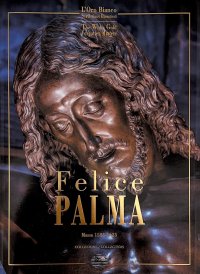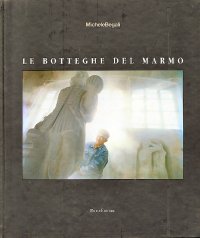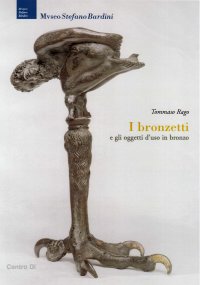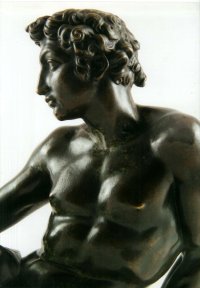Felice Palma. Massa 1583-1625. Collezione / Collection.
Texts by Andrei Cristina, Ciarlo Nicola, Federici Fabrizio, Claudio Casini and Sara Ragni.
Italian and English Text.
Pontedera, 2024; bound in a case, pp. 289, b/w and col. ill., b/w and col. plates, cm 24,5x34.
(L'Oro Bianco. Straordinari Dimenticati. The White Gold Forgotten Masters).
cover price: € 160.00
|
Books included in the offer:
Felice Palma. Massa 1583-1625. Collezione / Collection.
Texts by Andrei Cristina, Ciarlo Nicola, Federici Fabrizio, Claudio Casini and Sara Ragni.
Italian and English Text.
Pontedera, 2024; bound in a case, pp. 289, b/w and col. ill., b/w and col. plates, cm 24,5x34.
(L'Oro Bianco. Straordinari Dimenticati. The White Gold Forgotten Masters).
FREE (cover price: € 160.00)
Le botteghe del marmo
Italian and English Text.
Ospedaletto, 1992; bound, pp. 153, 10 b/w ill., 60 col. ill., cm 24x29.
(Immagine).
FREE (cover price: € 34.49)
Museo Stefano Bardini. I Bronzetti e gli Oggetti d'Uso in Bronzo
Edited by Nesi A.
Firenze, 2009; paperback, pp. 191, 102 b/w ill., 7 col. ill., cm 17x24,5.
(Museo Stefano Bardini).
FREE (cover price: € 30.00)
Bronzetti e Rilievi dal XV al XVIII Secolo
Bologna, 2015; 2 vols., bound in a case, pp. 729, ill., col. plates, cm 21,5x30,5.
FREE (cover price: € 90.00)
Peter Rich. Learnt in Translation
Rich Peter
Skira
English Text.
Milano, 2017; pp. 336, cm 15x21.
ISBN: 88-572-2480-5 - EAN13: 9788857224800
Subject: Architects and their Practices
Period: 1960- Contemporary Period
Languages: 
Weight: 0.57 kg
"A house is not a home unless it's a village." Peter Rich's internationally distinctive body of work is testament to a lifetime of commitment towards the creation of a uniquely African architecture. Rich is a pioneer in the documentation of the spatial and aesthetic elements of African tribal settlements, developing an architectural vocabulary that fuses Modernist principles with local tribal convention and sensitivities to material and environment. Peter Rich's practice is distinguished by a deep understanding of context, achieved through research into local conditions and close collaboration with communities. He does not see a building simply as a commodity with a limited life, but rather as a vital and integral part of an often long process of social and cultural engagement.












